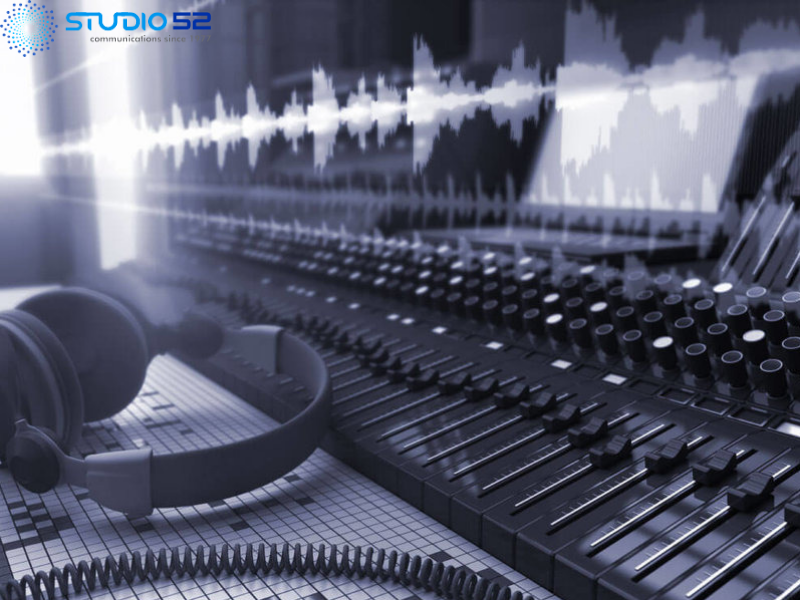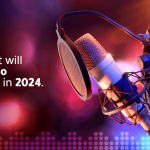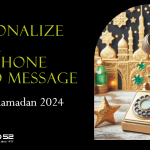Studio52 has been supporting enterprises with Audio production services for years. Our main verticals are On Hold messages, IVR (Interactive Voice Recording), and even Multi-language Dubbing. Audio technology has evolved a lot over this past decade and we feel the responsibility to share with you some of what we’ve learned. In this article, we’ll cover some of our favorite Audio recording trends of this decade.
While IVR technology and Call Centers have been around since the 1980s, things really took a turn on the late 2000s. With important improvements on CPUs, Audio recordings became smarter and cheaper to implement, Windows took the initiative in 2007 adding IVR features to their VoIP Hub. This basically made automated audio technology a necessity for a business to compete in the marketplace.
Higher quality recordings
More CPU power allowed space for higher quality audio recordings, this was great news for us. There are many aspects to audio recording, none more important than clarity of the message. With fewer limitations and modern codecs, the quality of functional audio files improved significantly.
Today, we have a wide variety of modern codecs. You’re likely very familiar with MP3, it’s been around since 1988. The issue with the MP3 codecs is that it uses a lossy compression method, which means lower quality playbacks. Back then, the need for saving storage space made working with MP3 a necessity. That changed with the arrival of more powerful CPUs, allowing us to use lossless codecs such as LAC, ALAC, and WMA Lossless. These are about three times larger than MP3 files, but the increase in sound quality made it well worth it. If you’d like to learn more about the different modern codecs, Cortney Moore wrote a great piece about them on Tom’s guide.
More intelligible audio recordings allowed a wider usage for this technology. Nowadays you can efficiently gather all the information needed to deal with a client on an IVR system, severely reducing customer service costs. You can even have your possible clients navigate your services to free up your marketing budget. This had a huge impact on mass market services such as banks, hotels, hospitals and more.
Another perk of the CPU improvements was the facility to include multiple languages for each message. This solved more than one problem for international businesses, eliminating the need to choose which demographic they would give priority. This was particularly important to big hotel chains and international banks. Our work with Radisson Blu comes to mind. They no longer needed to choose a single language for their On-Hold Messages, so we developed for them this recording in both English and Arabic.
This meant better experiences for both local and international callers. Nowadays most big companies use multiple languages for their recordings. Either letting the customers choose which they prefer on IVR systems or playing them back to back on On-Hold Messages like the one above.
From DTMF to ASR
Another huge change for the audio recording industry in the last decade was the introduction to Automated Speach Recognition (ASR). While Dial Tone Multi-Frequency is still a great tool for IVR systems, it can get cumbersome and hard to navigate. Adding speech recognition to the mix meant a whole new level for IVR Systems, user interaction was made a lot more intuitive. Developments such as SALT (Speech Application Language Tags), VoiceXML (Voice Extensible Markup Language), and CCXML (Call Control XML) made it simple and effective to implement.
Now, this hardly means we said goodbye to the DTMF technology. Not all customers loved the insertion of ASR, especially while it was new and still in need of improvements. Luckily this didn’t present an issue. As we mentioned above, by this time we had a lot fewer limitations. Using both systems simultaneously helped improve the customer experiences, regardless of their preference.
There are many reasons to invest in IVR for your business. We already covered them in a previous publication.
- IVR leads to customized conversation and a better customer experience
- IVR makes your company look big and professional
- IVR can be used for time-based routing and location-based routing
- IVR works as a virtual phone receptionist and automated self-service for a wide range of uses
- IVR provides easy menu options and personalization
- IVR reduces costs
You can learn more about the reasons you should use IVR for your business in our article “Here’s Why You Should Approach IVR Services For Your Business”.
A survey conducted by DMG in 2010 showed that 76.6% of responding enterprises were already using interactive voice response systems and most of those who didn’t have an IVR system in place planned to invest in it in the near future.
Realising the importance of On-Hold Messages
Looking back to our article “Don’t Give Your Callers the Silent Boring Treatment: Explore Telephone Hold Message (THM)” where we talked about a CNN survey from 2011. 70% of the callers in the United States would hang up the call within the first 60 seconds of being on hold as per a. A North American Telecom study revealed that a caller would stay on the line around 30 seconds longer if they are hearing some music while on hold as compared to a caller who experiences silence. Also, a caller listening to commercials stayed up to 3 minutes longer.
We knew On-Hold Messages had a great marketing potential, but that survey made us realize there was a lot more to this technology. More retention on calls plus extra exposure for marketing campaigns made conversions skyrocket. In the end, that’s what marketing is all about. On-Hold Messages allowed brands to show respect for their clients time, no longer being wasted with awkward silences. It’s also an excellent tool for cross-selling, you can consider anyone waiting on hold a Hot Lead, why waste the opportunity?
A few years later the success of this trend became clear. A study conducted on 2014 by PHMG showed that “45% of UK consumers are happy to hold longer than a minute during calls to businesses and only 6% are not willing to wait at all.” Similar results were found for American consumers. It was clear On-Hold Messaging was here to stay.
Those are just some of the highlights from this past decade of experience. If you want to hear more of our audio recording projects you can visit our site. https://studio52.tv/audio/
Now, if you want all our experience to work for your brand, get your free consultation today, CALL NOW +971-4-454-1054. We are happy to share our expertise. You can also visit one of our offices: https://studio52.tv/contact/
Also, know about – English to Tagalog translators





